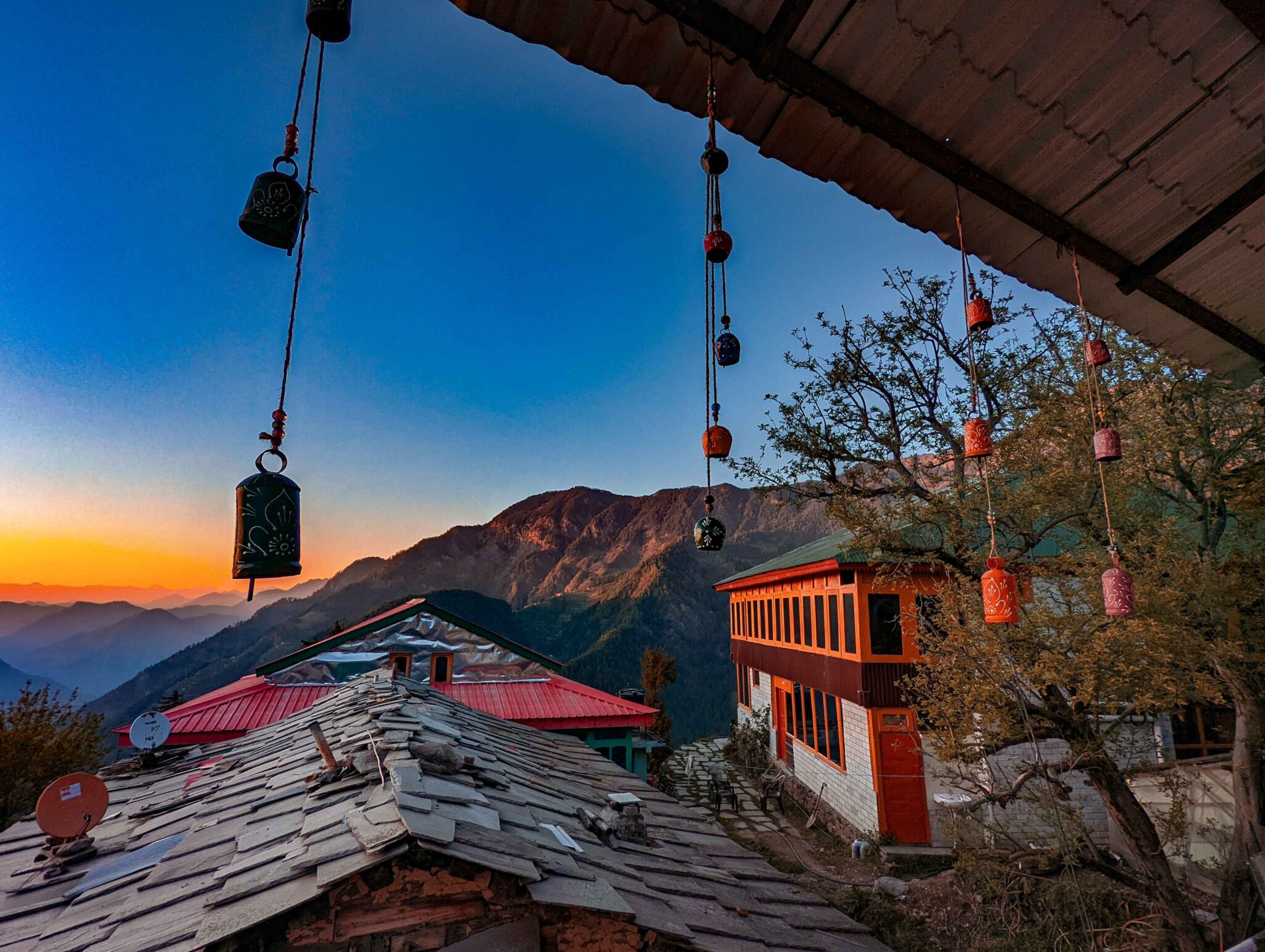Shoja has something for everyone. Whether I’m lacing up my boots for a trek, indulging in the local flavors, or simply curling up by a window with a good book, this place has a way of making me feel completely at peace. It’s a place where life feels beautifully uncomplicated.
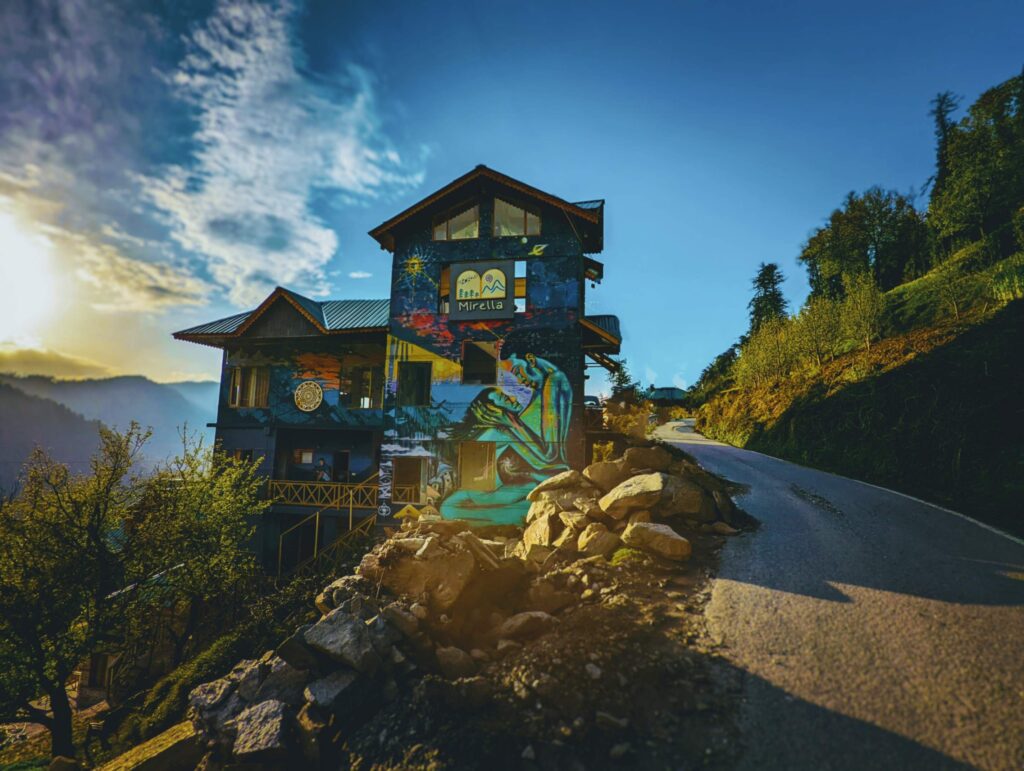
It is a tiny village away near Jalori Pass in Himachal Pradesh having literally some of the best post card views. The moment I arrived in here , it was as if time itself slowed down. The air felt different here. It was fresher, crisper, carrying the unmistakable scent of the mountains. It was clear that the mother nature had saved its finest strokes for this little village.
TABLE OF CONTENT:
The Journey to Shoja, Himachal Pradesh.
The Charm of Shoja: Silence that Speaks Volumes
What can you do in Shoja, Himachal Pradesh?
Food in Shoja: A Feast for the Soul (and Stomach)
Travel planning Aspects for Travelling to Shoja, Himachal Pradesh.
Why Shoja should be your next destination in Himachal Pradesh?
The Journey to Shoja, Himachal Pradesh.
After spending peaceful time in Shangarh, I began my journey to Shoja. Distance was roughly 70km from Shangarh.
Weather was blissful as it was the month of May. However the weather in Himalayas is quite unpredictable. Bright sunny day was converted to damp rainy day in just 5 minutes. Due to the rains, I thought to stop in some random restaurant in Banjar town for couple of hours & complete the lunch.
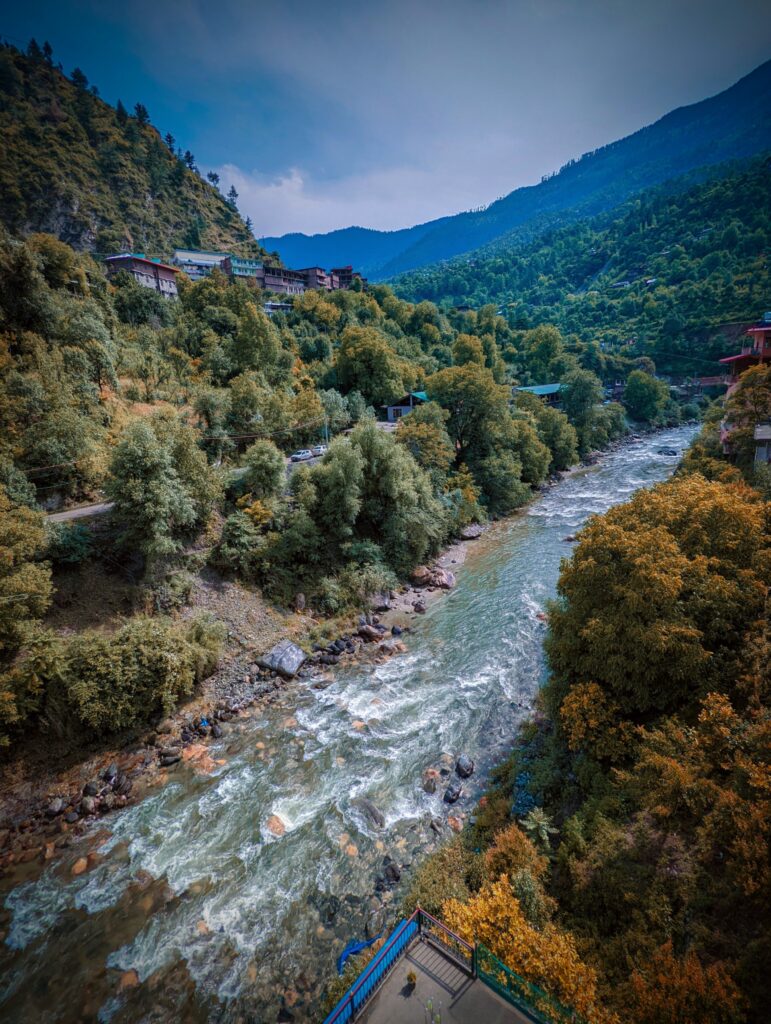
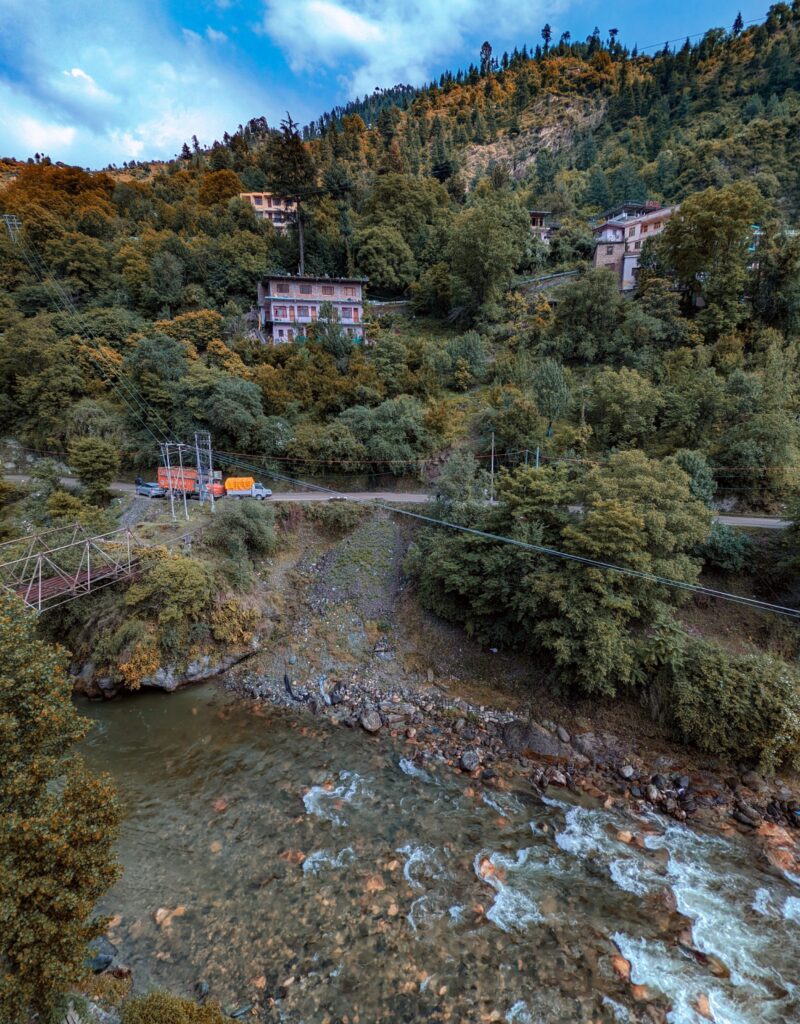
When the rains stopped, the journey began once again. In no time we entered Jibhi. Jibhi is a beautiful Himalayan village on the banks of River Tirthan.
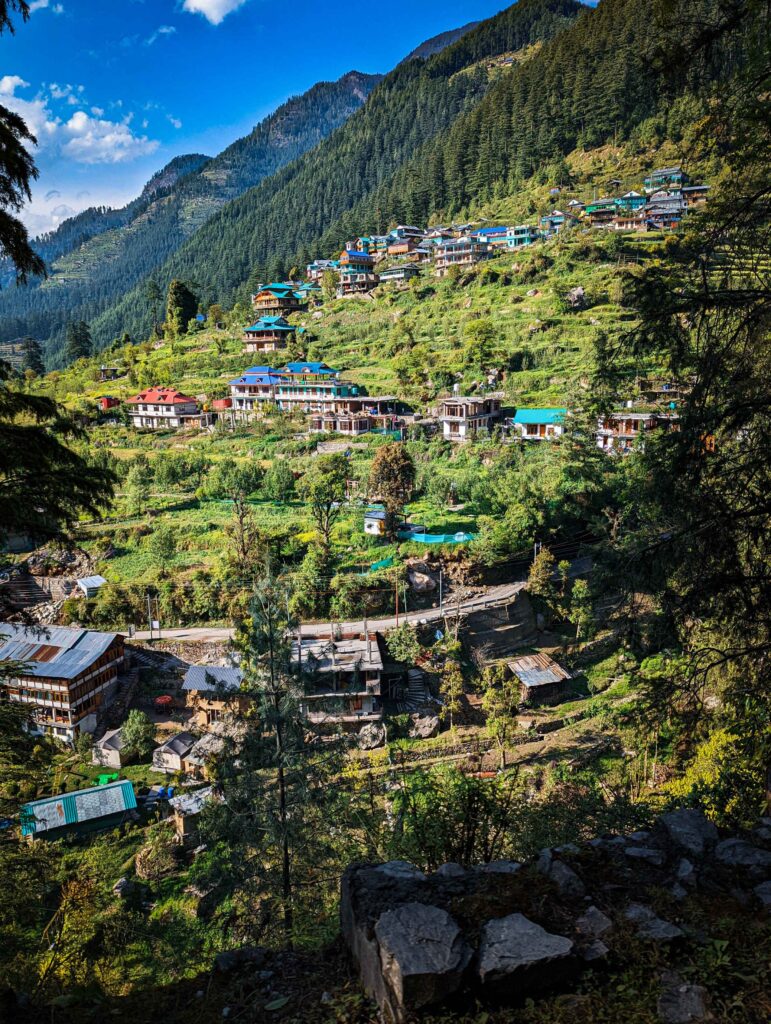
On the way , I also found a beautiful Himalayan hamlet named Ghiyagi. It just stole my heart in first sight. I instantly put this in my Wish list. After a beautiful ride, finally I arrived to my beautiful little final destination.
The Charm of Shoja: Silence that Speaks Volumes
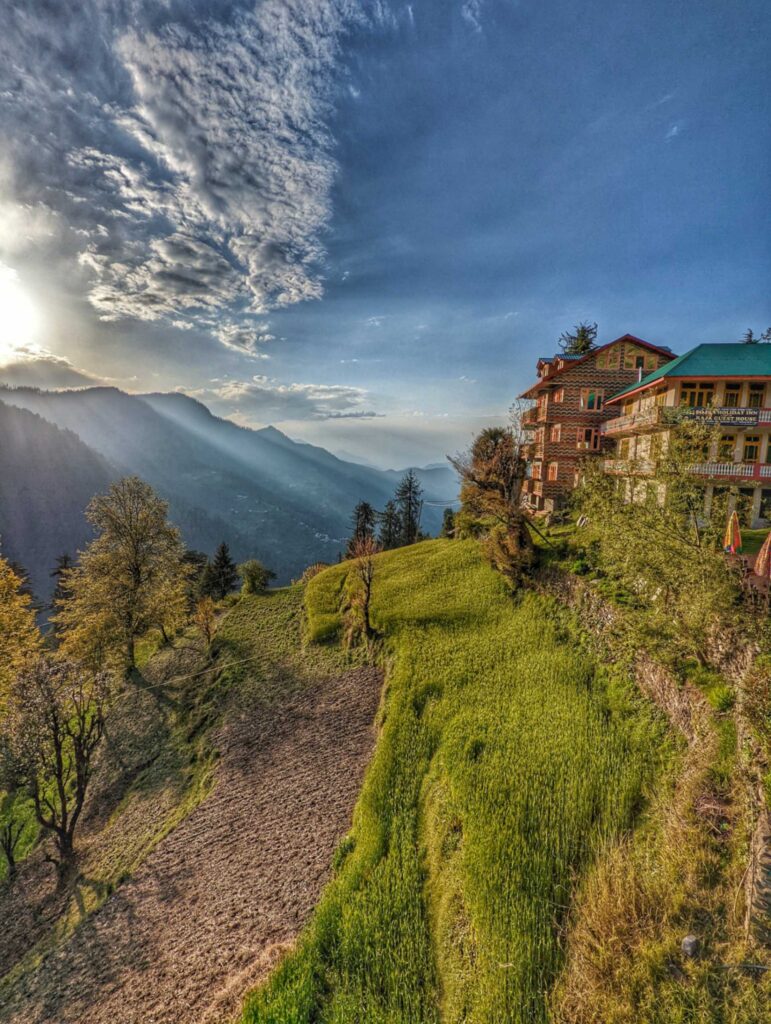
This little Himachali town isn’t hotspot with chaotic tourists. It’s a silent village & the only sound you’ll hear is the gentle rustling of pine trees and the occasional chirping of birds—unless you count my gasps while hiking.
This place is indeed a paradise for those who want to escape the chaos. The village itself is a picture-perfect postcard, complete with cozy cottages, blooming wildflowers, and locals with warm smiles.
The Stay: Hosteller Shoja
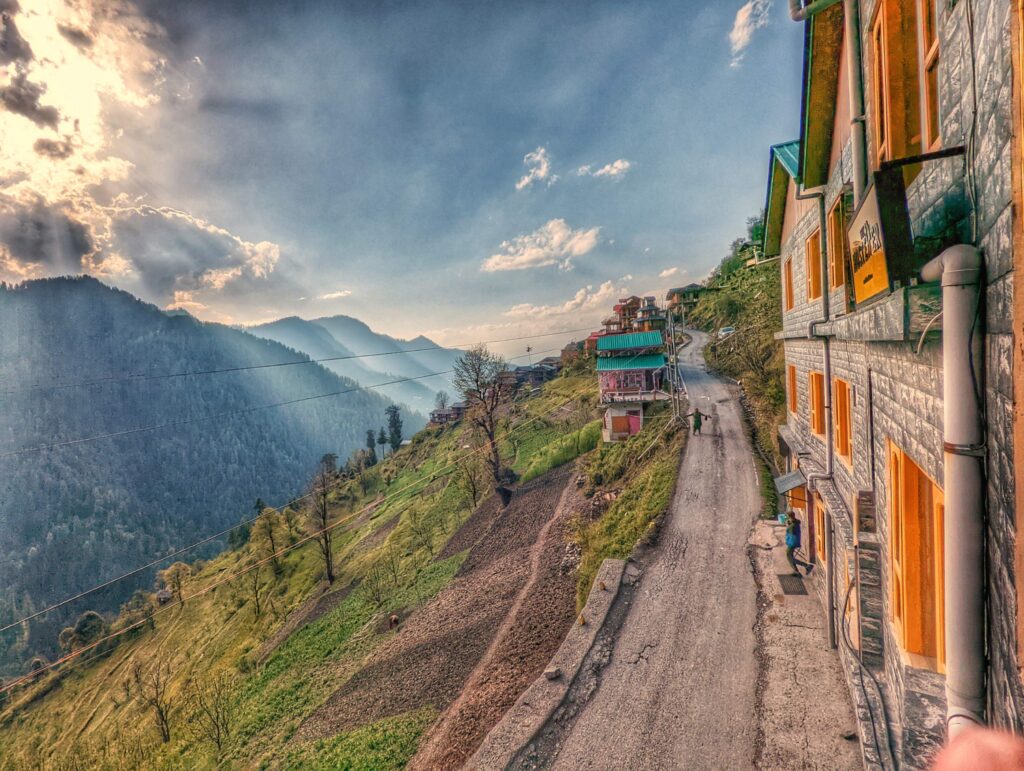
In hosteller Shoja, you don’t just book a room; you inherit a home, complete with excellent hospitality. I stayed in cosy little room with wooden interiors, fluffy blankets, and a perfect himalayan view.
Every morning, it was a daily ritual for me to open the windows & feel the fresh air & see those lovely snow clad peaks at the backdrop.
What can you do in Shoja, Himachal Pradesh?
Basically you have 3 major things to do here:
1. Raghupurgarh fort trek. ( Guide not needed)
2. Serolsar lake trek. ( Guide not needed)
3. Waterfall trek. ( Guide needed)
Food in Shoja: A Feast for the Soul (and Stomach)

If this beautiful place had a tagline, it would be, “Come for the views, stay for the food.” I had most of my meals in “Rustic Shoja” & it has a very cosy type atmosphere. Lasagna & Momos were absolutely delicious. I am happily recommending it.
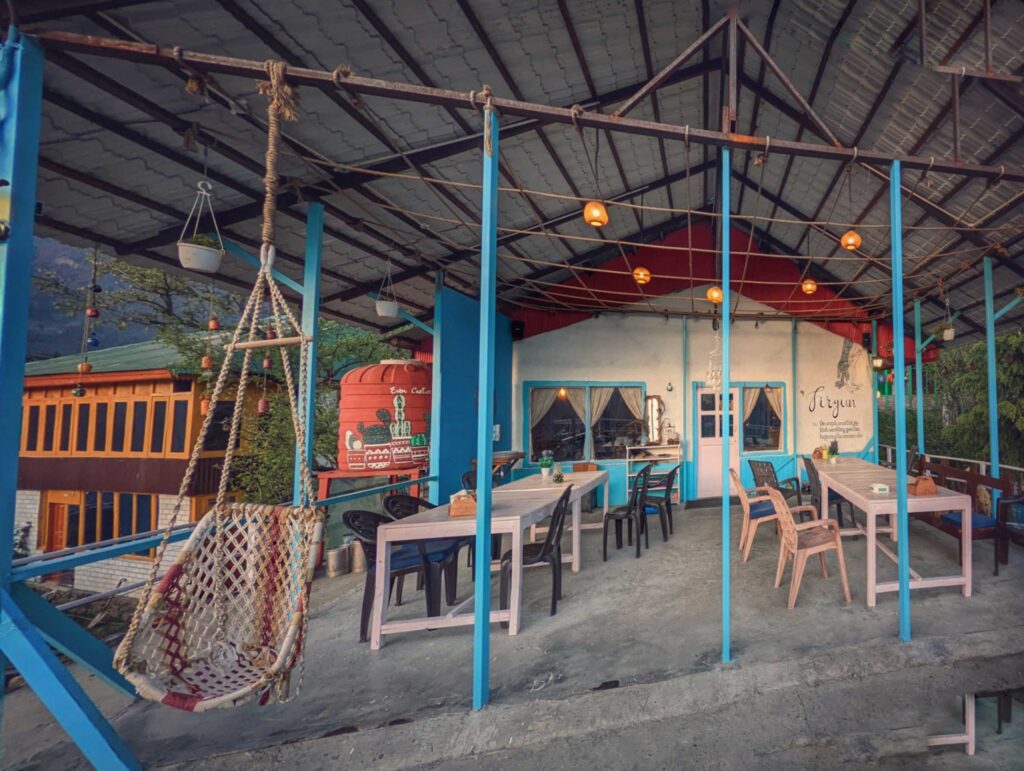
I am also recommending to visit Café Firgun at the time of sunset & try out their Hot Chocolate. It’s the best part watching orange Himalayan horizon along with sipping some delicious hot chocolate.
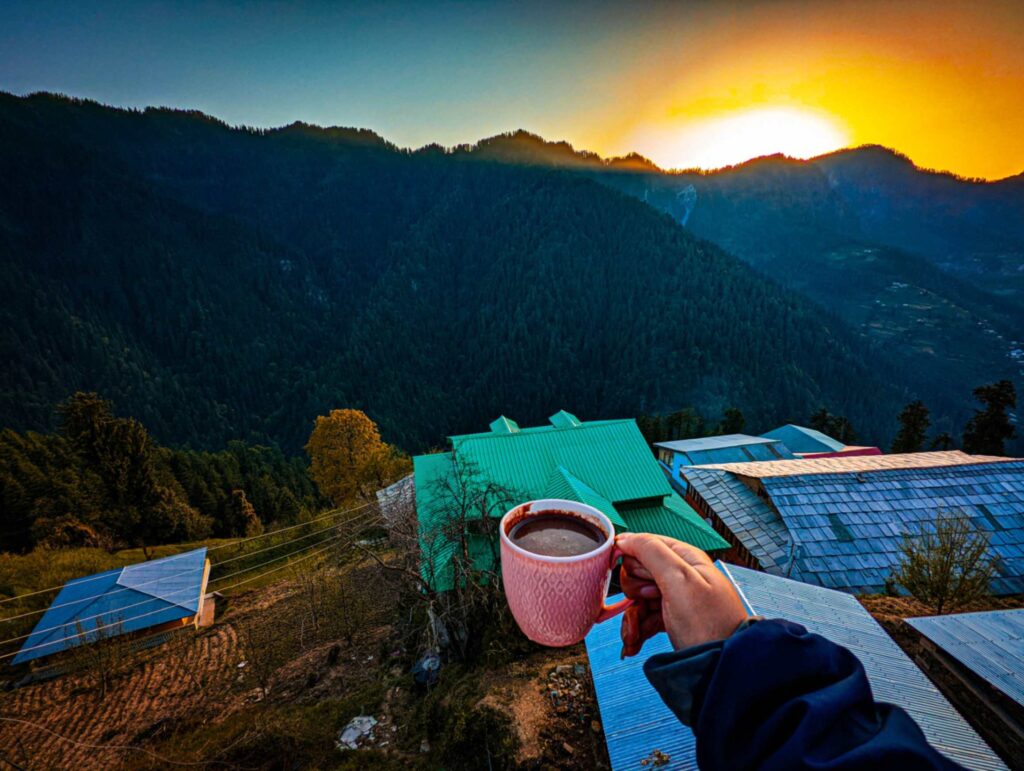
For the breakfast, I would suggest you to go any Himachali place which serves Siddu. Siddu is kind of hot steamed semicircular bun filled with walnut paste & served hot with ghee. It’s the best Himachali breakfast.
Travel planning Aspects for Travelling to Shoja, Himachal Pradesh.
When to plan a trip here?
I am mentioning all the good & the bad aspects of travelling in all seasons so you can take an informed decision & make further plans accordingly.
Spring (Mid March to Mid April)
Spring in Shoja is a celebration of renewal. The snow begins to melt, revealing meadows blanketed with blooming wildflowers. Temperatures hover between 10°C and 20°C, offering a pleasant climate for outdoor activities.
Advantages of Visiting in Spring
Nature’s Bloom: The vibrant flora and fauna provide breathtaking views and excellent photography opportunities.
Mild Weather: Ideal for trekking, birdwatching, and exploring attractions like Jalori Pass.
Festivals: Local springtime festivals offer cultural immersion.
Disadvantages of Visiting in Spring
Expensive Stays: Accommodation costs rise due to higher demand.
Summer (Mid April to Mid June)
Shoja is a cool respite from the plains’ scorching heat. The temperature ranges from 15°C to 25°C, making it ideal for trekking and outdoor adventures. Lush greenery covers the landscape, enhancing its charm.
Advantages of Visiting in Summer
Comfortable Climate: Perfect for trekking trails like Serolsar Lake or exploring the Great Himalayan National Park.
Adventure Activities: Camping, fishing, and paragliding opportunities abound.
Family-Friendly: Suitable for family vacations due to the pleasant weather.
Disadvantages of Visiting in Summer
Peak Season Rush: Expect a rise in visitors, which might disrupt the serenity especially on weekends.
Monsoon (September)
Monsoon transforms Shoja into a misty haven. The rainfall rejuvenates the flora, creating a dreamlike ambiance. However, rainfall can vary, making weather slightly unpredictable.
Advantages of Visiting in Monsoon
Scenic Beauty: The verdant landscapes and occasional rainbows are mesmerizing.
Lower Costs: Fewer visitors mean discounted rates on accommodation.
Peace and Solitude: Ideal for those seeking a tranquil retreat.
Disadvantages of Visiting in Monsoon
Landslide Risks: Roads may be affected, making travel difficult.
Limited Outdoor Activities: Trekking paths become slippery and hazardous.
Winter (November end to mid march)
Winter envelops Shoja in a blanket of snow, creating a picturesque winter wonderland. The temperature often dips below freezing, especially at night.
Advantages of Visiting in Winter
Snow Activities: Perfect for snow trekking and cozy bonfire nights.
Serenity: Less crowded compared to other hill stations in winter.
Postcard Views: Photographers can capture the beauty of snow-clad landscapes.
Disadvantages of Visiting in Winter
Travel Challenges: Snowfall can lead to road closures and delays.
Cold Weather: The freezing temperatures require extra preparation.
Essential Packing Tips for Each Season
Spring: Light woolens, trekking gear, and sunscreen.Summer: Comfortable clothing,light jacket, hats, and water bottles.
Monsoon: Waterproof jackets, light jacket ,sturdy shoes, and umbrellas.
Winter: Heavy woolens, snow boots, and thermal layers.
How to do all the planning before arriving here?
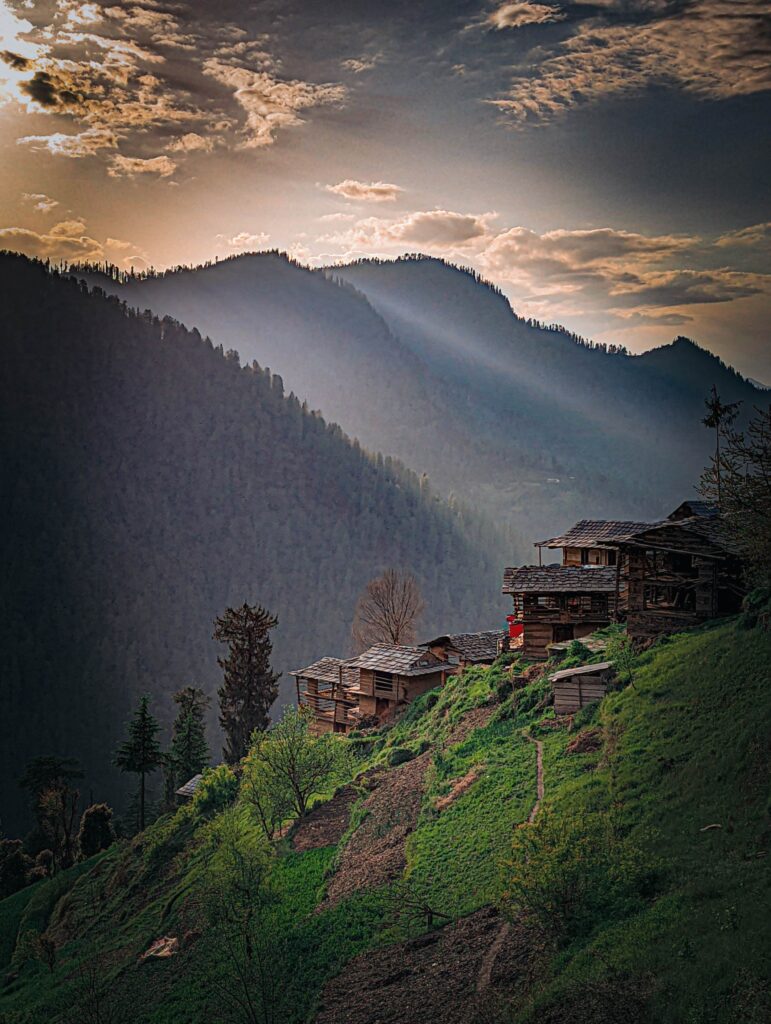
A) Distances from major Himachal Pradesh towns to Shoja, Himachal Pradesh:
1. From Bhuntar kullu (60km)
2. From mandi (70km)
3. From Shimla (160 km)
Above three places have excellent connectivity by buses from Delhi as well as Chandigarh. You can pre-book the bus tickets from Redbus app. For the non festive season, you can also get bus tickets on the spot. However I recommend getting the bus reservations atleast 2 days in advance.
State run buses are also available frequently to Mandi, Bhuntar (kullu) & Shimla from Delhi ISBT & Chandigarh ISBT.
If you are not coming in your own vehicle from Delhi or Chandigarh, then I would suggest you to reach either Mandi/ Blunter /Shimla by bus & then take a car or motorcycle on rent to reach this little village.
Motorcycle rentals are easily available for backpackers in Mandi /Bhuntar/Shimla. I would suggest to take a motorcycle instead of scooty to easily navigate through Jalori pass. You can contact these rentals on phone & ask them about the price & the availability. After ensuring the availability, you can then visit the rental shop & book it on the spot also.
B) How to get around in Shoja ?
Public transport is not frequent. Hence I recommend getting around by private vehicle.
C) Stay Booking planning tips
For backpackers, hostels as well as homestays are available here. If you are planning trip in spring & summer- (Mid March to Mid june) & autumn (October to mid November), you can pre- book your stays about 3-4 days in advance as there is very less probability of road blockages.
However if you are planning your trip in winters ( November to March) & rainy season (mid June to September end), don’t book your stays in advance as there might chances of road blockade due to snow during winters or landslides during monsoon. If such kind of thing happens, you should be able to change your itinerary freely.
However there are some category of travellers who book all the stays in advance only for mental peace. If you fall under this category & do booking stay accomodations in advance during winters & rainy season, I highly recommend you to book refundable stay options. Also I would suggest you to keep atleast 2 buffer days in monsoon & winter itinerary.
Travel Tips:
1. Pack Light but Smart: Layers are your best friend; the weather here changes faster than my mood when I’m hungry.
2. Stay Hydrated: The high altitude can be a tad dehydrating, so keep sipping water.
3. Cash is King: ATMs are rare here, so stock up on cash. Some restaurants also accept UPI payments. However it’s better idea to carry some cash too.
4. Respect Nature: Leave only footprints, take only memories (and maybe a Himachali cap as a souvenir).
Why Shoja should be your next destination in Himachal Pradesh?
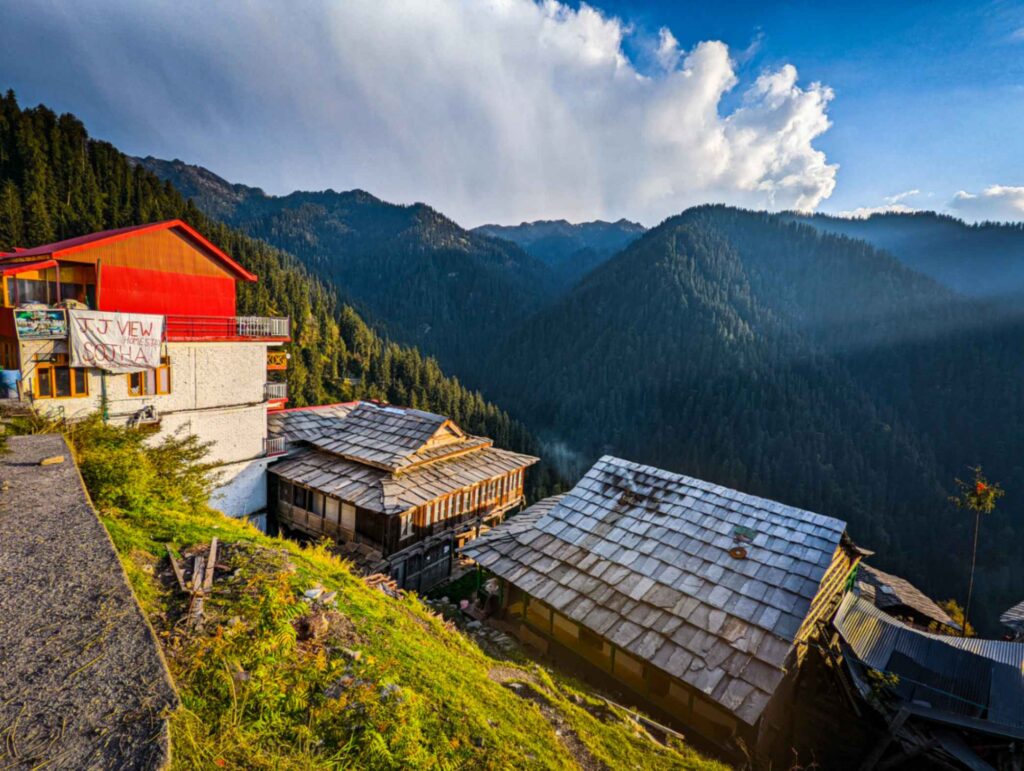
If you have read out & reached till this point, I am pretty sure that this little village has captured your mind.
So for experiencing utmost tranquility, pack your bags and let this hamlet work its magic. Trust me, it’s a trip you’ll reminisce about every time you find yourself stuck in city traffic.
If you have liked this blog on Shoja, you would also love to check out blog based on an another Himachali hamlet of Sissu.

